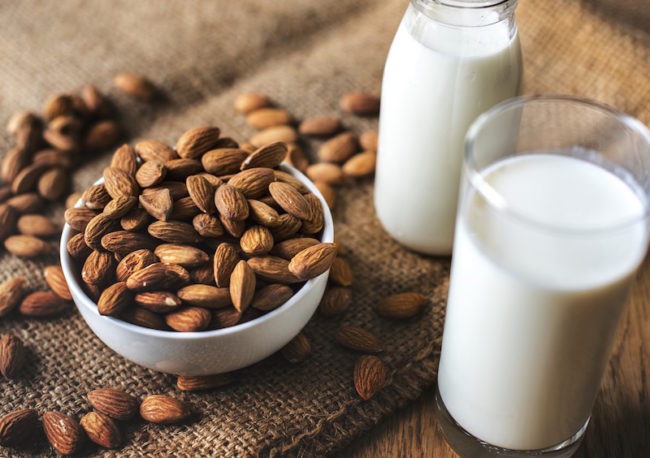Just one look down the dairy aisle at any grocery store reveals a plethora of white beverage options: milk. What used to be a honey-do of “Can you grab milk at the corner store?” has left husbands, wives, children and single adults alike confused.
The corner store has “got milk?” for sure, but what is the best version? From dairy to almond to soy to coconut to cashew to rice, the list just goes on and on.
Dairy milk is milk. Any other drink, such as milk alternatives like almond milk or coconut milk, do not meet the FDA qualifications for what is classified as milk. Nevertheless, what is the best liquid to pour over cereal or include in a latte?
Dairy Milk, the good old-fashioned cow’s milk
Nutritional Highlights: (In one cup of cow’s milk) 120 calories, five grams of fat, eight grams of protein
There are many versions, such as whole, 2 percent, low fat and skim. It is recommended that shoppers consult their physician on which type to select. At the end of the day, this milk is the classic choice.
For Lona Sandon Ph.D., who teaches Clinical Nutrition at the University of Texas Southwestern, dairy milk is by far the best choice.
“One advantage is the completeness of the nutritional package it provides,” Sandon said. “You get a complete protein in addition to several other nutrients, vitamin B, vitamin D, vitamin A and calcium. When you’re choosing dairy milk, you’re getting a lot of nutritional impact for your dollar.”
For some, dairy milk is not an option either due to a milk allergy, lactose intolerance or dietary choice. The next milk, soy milk, may be a better option.
Soy Milk, the second best
Nutritional Highlights: (in Silk Organic unsweetened Soy milk, nutritional information varies by brand) 80 calories, four grams of fat, seven grams of protein
“If you don’t have issues, cow’s milk is the way to go. Soy milk comes in for a close second,” Sandon said.
One cup of unsweetened soy milk contains seven grams of protein, which is just one gram less than the dairy milk alternative. Due to its high protein punch, soy milk is a good alternative for growing children who have milk allergies.
Many soy milks contain a lot of sugar. Like most milk alternatives, it is possible to find unsweetened versions of the drink.

Almond Milk, the nutty, not-so milky option
Nutritional Highlights: (in Blue Diamond Unsweetened Original Almondrink, nutritional information varies by brand) 30 calories, 2.5 grams of fat, one gram of protein
Almond milk is another choice that has an ever-growing fan base. Starbucks even introduced the milk alternative as an option in September 2016.
For Royal Blue Grocery in Highland Park Village, almond milk has quickly become a bestseller in both their retail store and coffee shop.
“Our Califia Barista Blend Almond milk is the most popular in our coffee bar. It’s ahead of traditional dairy for us now,” Zac Porter, the owner of Royal Blue Grocery said. “We have several great retail milks, but our top seller is basically a tie between dairy milk and almond milk.”
For some, like SMU student Lauren Veith, plant-based milk alternatives are the only type of milk drink they can consume. Veith stopped drinking drinking dairy for health reasons.
“I went to the grocery store and looked at all the labels,” Veith said. “A lot of milk alternatives have dirty ingredients, like sugar.” She found looking at nutrition labels to be most helpful and ended up choosing a milk with just five ingredients.
Sandon cautioned against drinking solely almond milk as it does not naturally contain calcium.
“Plant-based milks are very devoid of calcium,” Sandon said. When shopping, she recommends looking at the label for “calcium-fortified,” which means calcium has been added to the drink. In addition, she recommends looking for unsweetened versions of the drink.
The milk aisle is full of options: dairy, soy, almond, oat, coconut, cashew- the list goes on and on. At the end of the day, Sandon recommended that shoppers steer clear of smart marketing and raise their awareness of the nutritional information.
The average grocery shop may require a bit more reading now, but your body will thank you later for getting in the proper nutrients.
got milk? Now you do!
Editor’s note: The got milk? campaign specified the particular spelling and punctuation of “got milk?”


















